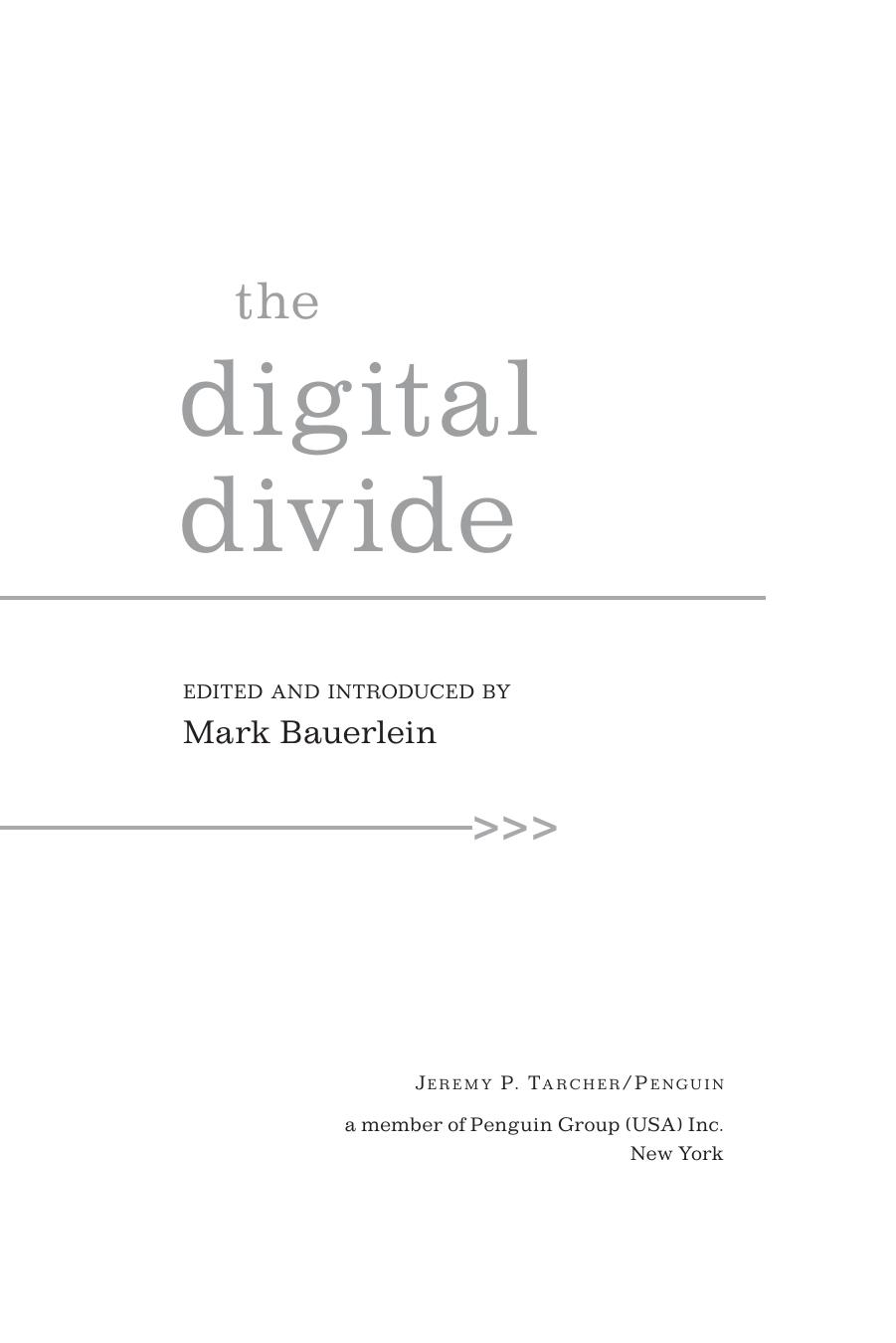The Digital Divide by Mark Bauerlein

Author:Mark Bauerlein
Language: eng
Format: epub, mobi, pdf
Publisher: Penguin Group USA, Inc.
Published: 2011-08-07T16:00:00+00:00
>>> degrees of separation
It is worth pausing for a moment to reflect on the curious use of the word networking to describe this new form of human interaction. Social networking websites “connect” users with a network—literally, a computer network. But the verb to network has long been used to describe an act of intentional social connecting, especially for professionals seeking career-boosting contacts. When the word first came into circulation in the 1970s, computer networks were rare and mysterious. Back then, “network” usually referred to television. But social scientists were already using the notion of networks and nodes to map out human relations and calculate just how closely we are connected.
In 1967, Harvard sociologist and psychologist Stanley Milgram, best known for his earlier Yale experiments on obedience to authority, published the results of a study about social connection that he called the “small world experiment.” “Given any two people in the world, person X and person Z,” he asked, “how many intermediate acquaintance links are needed before X and Z are connected?” Milgram’s research, which involved sending out a kind of chain letter and tracing its journey to a particular target person, yielded an average number of 5.5 connections. The idea that we are all connected by “six degrees of separation” (a phrase later popularized by playwright John Guare) is now conventional wisdom.
But is it true? Duncan J. Watts, a professor at Columbia University and author of Six Degrees: The Science of a Connected Age, has embarked on a new small world project to test Milgram’s theory. Similar in spirit to Milgram’s work, it relies on e-mail to determine whether “any two people in the world can be connected via ‘six degrees of separation.’ ” Unlike Milgram’s experiment, which was restricted to the United States, Watts’s project is global; as he and his colleagues reported in Science, “Targets included a professor at an Ivy League university, an archival inspector in Estonia, a technology consultant in India, a policeman in Australia, and a veterinarian in the Norwegian army.” Their early results suggest that Milgram might have been right: messages reached their targets in five to seven steps, on average. Other social networking theorists are equally optimistic about the smallness of our wireless world. In Linked: The New Science of Networks, Albert-László Barabási enthuses, “The world is shrinking because social links that would have died out a hundred years ago are kept alive and can be easily activated. The number of social links an individual can actively maintain has increased dramatically, bringing down the degrees of separation. Milgram estimated six,” Barabási writes. “We could be much closer these days to three.”
What kind of “links” are these? In a 1973 essay, “The Strength of Weak Ties,” sociologist Mark Granovetter argued that weaker relationships, such as those we form with colleagues at work or minor acquaintances, were more useful in spreading certain kinds of information than networks of close friends and family. Watts found a similar phenomenon in his online small world experiment: weak ties
Download
The Digital Divide by Mark Bauerlein.mobi
The Digital Divide by Mark Bauerlein.pdf
This site does not store any files on its server. We only index and link to content provided by other sites. Please contact the content providers to delete copyright contents if any and email us, we'll remove relevant links or contents immediately.
Cecilia; Or, Memoirs of an Heiress — Volume 1 by Fanny Burney(31333)
Cecilia; Or, Memoirs of an Heiress — Volume 3 by Fanny Burney(30934)
Cecilia; Or, Memoirs of an Heiress — Volume 2 by Fanny Burney(30889)
The Great Music City by Andrea Baker(21322)
We're Going to Need More Wine by Gabrielle Union(18074)
Bombshells: Glamour Girls of a Lifetime by Sullivan Steve(13109)
Pimp by Iceberg Slim(12933)
All the Missing Girls by Megan Miranda(12753)
Fifty Shades Freed by E L James(12451)
Norse Mythology by Gaiman Neil(11885)
Talking to Strangers by Malcolm Gladwell(11880)
Crazy Rich Asians by Kevin Kwan(8351)
Mindhunter: Inside the FBI's Elite Serial Crime Unit by John E. Douglas & Mark Olshaker(7835)
The Lost Art of Listening by Michael P. Nichols(6474)
Enlightenment Now: The Case for Reason, Science, Humanism, and Progress by Steven Pinker(6407)
Bad Blood by John Carreyrou(5770)
The Four Agreements by Don Miguel Ruiz(5511)
Weapons of Math Destruction by Cathy O'Neil(5038)
We Need to Talk by Celeste Headlee(4871)
